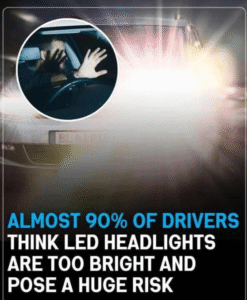Blinded by the Light? 90% of Drivers Say LED Headlights Are Just Too Much
In recent years, LED headlights have become the norm on modern vehicles, praised for their energy efficiency, longevity, and bright illumination. However, a growing number of drivers are speaking out against what they see as an unintended hazard: the overwhelming brightness of these lights. According to a recent survey, 90% of drivers report that LED headlights from oncoming traffic are too intense, often causing temporary vision impairment and increased difficulty driving at night.
This widespread dissatisfaction isn’t just anecdotal—it’s become a common concern among road safety experts and consumer advocacy groups. Unlike traditional halogen lights, LED headlights emit a cooler, bluish-white light that can appear far brighter to the human eye, especially in dark or rural settings. While manufacturers argue that these lights improve visibility for the driver, critics argue that they do so at the expense of everyone else on the road.
For many, the experience is more than just annoying—it’s dangerous. Drivers report being “blinded” by high-intensity LED beams, leading to slowed reaction times, missed turns, or even veering off the road. In extreme cases, some have described near-miss accidents due to momentary loss of sight. Night driving, already more risky than daytime travel, becomes even more stressful when visibility is compromised by overly bright headlights.
Part of the problem lies in how headlights are aimed and regulated. Although automakers follow federal standards, there is little enforcement or consistency in how headlights are installed and maintained. Misaligned lights can shine directly into the eyes of oncoming drivers, and lifted vehicles—like SUVs and trucks—are more likely to shine lights directly into lower vehicles, exacerbating the issue.
The Insurance Institute for Highway Safety (IIHS) and other organizations have begun to push for stricter regulations and more standardized testing for headlight glare. Some car makers have introduced adaptive lighting technology that automatically adjusts the beam angle or brightness when oncoming traffic is detected. However, these features are typically limited to high-end vehicles and remain out of reach for most consumers.
In the meantime, frustrated drivers are taking matters into their own hands. Some wear anti-glare glasses, install tinted visors, or even place film over their windshields—all with mixed results. Online forums and social media are flooded with complaints, as drivers plead for government intervention and automaker accountability.
The rise in complaints is a reminder that brighter isn’t always better. While LED headlights have technical advantages, the human factor—the safety and comfort of all drivers—must be taken into account. As technology continues to evolve, so too should the standards that govern its use on public roads. Until then, the glare of progress may continue to leave many drivers squinting in the dark.

